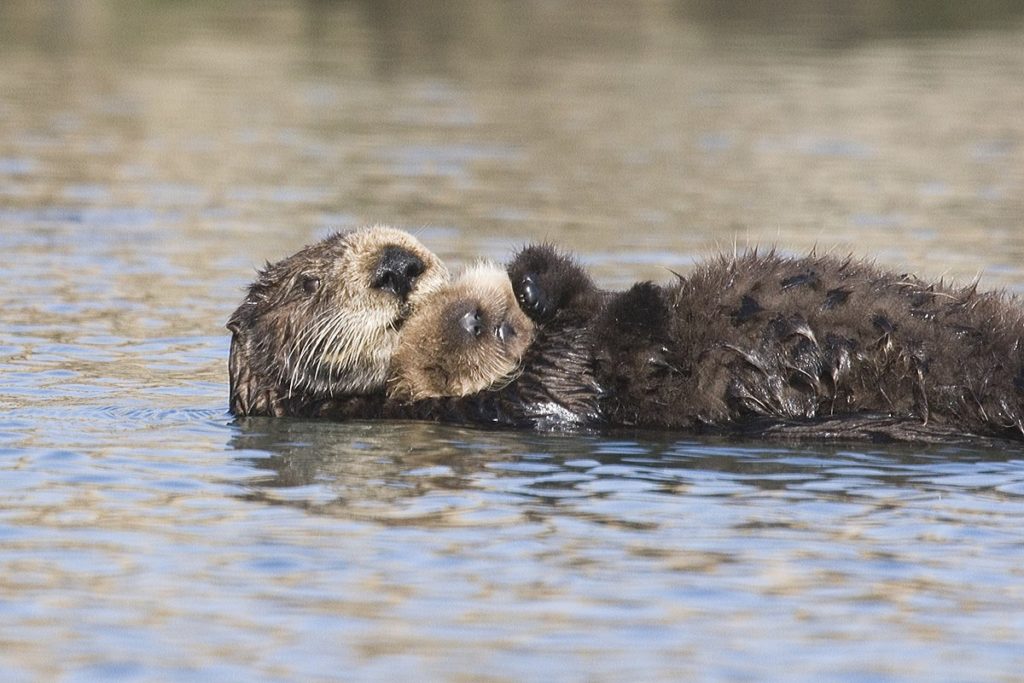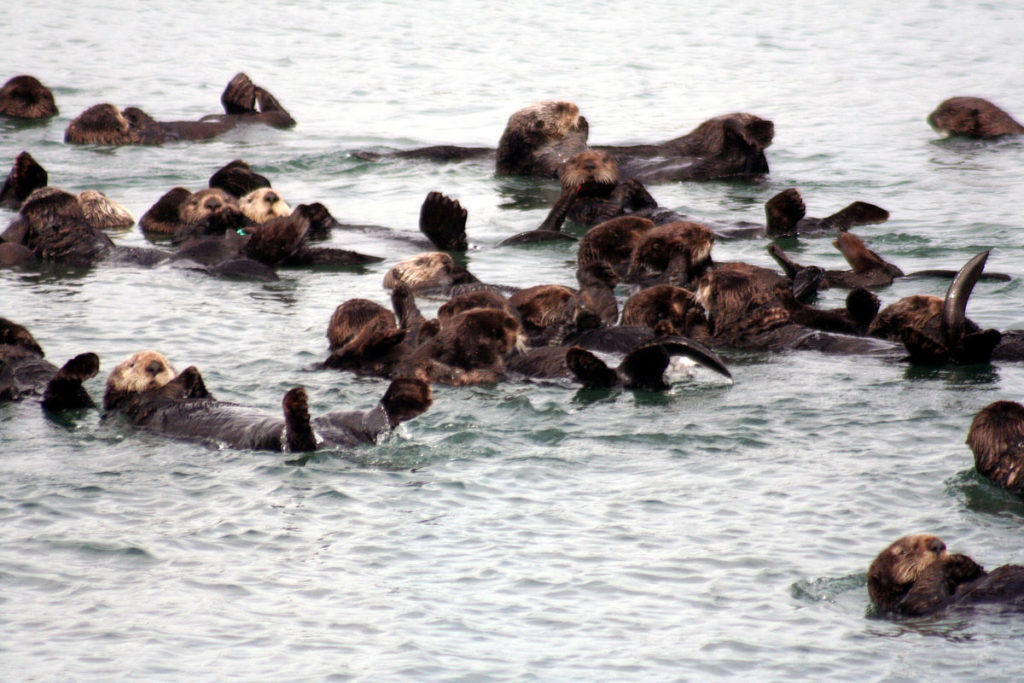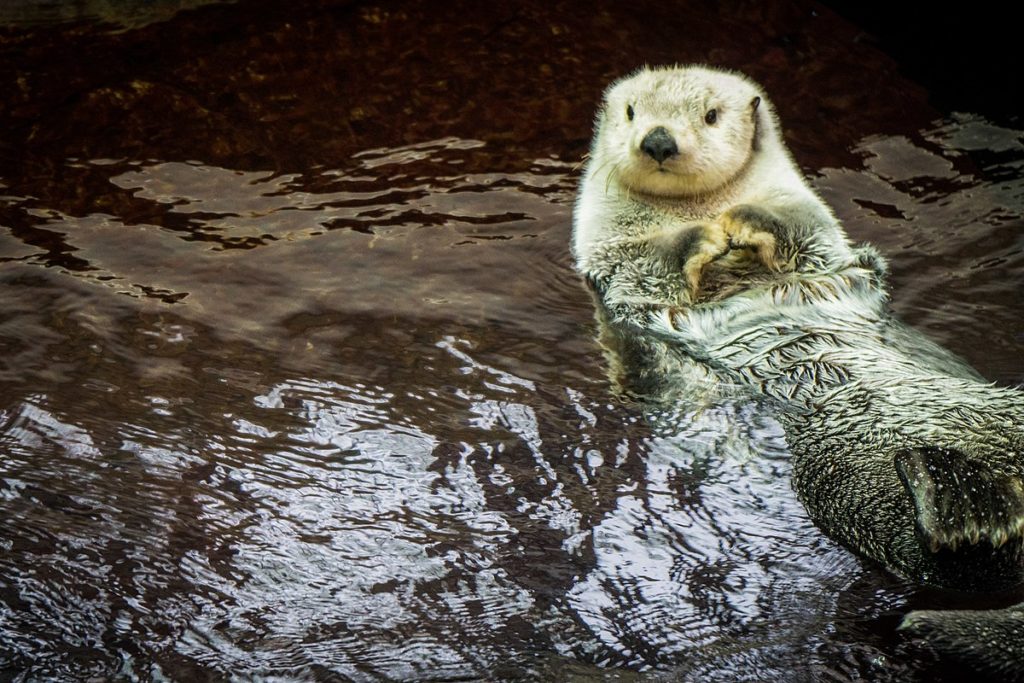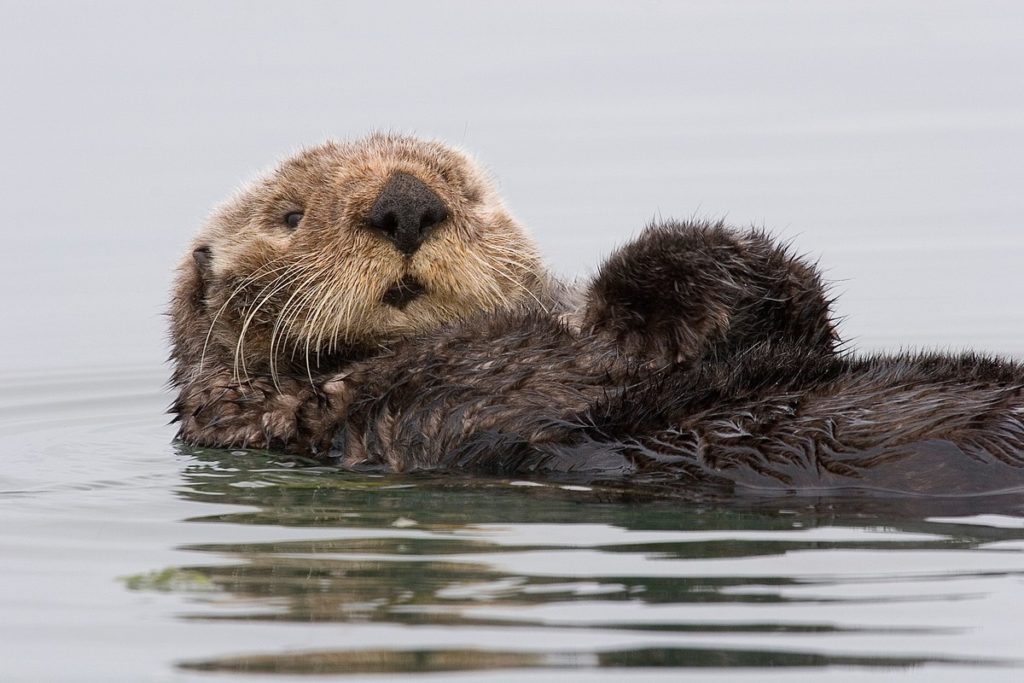I returned to work today after the long weekend and flipped my calendar to September. The new month shows a mother and baby sea otter kicking back. Completely adorable, so today you get to read about sea otters and the first international wildlife conservation treaty.

Attribution: “Mike” Michael L. Baird via Wikimedia Commons.
Today, most sea otters live in the coastal waters of Alaska. They weigh about 45-90 pounds. They use rocks as tools to open shells for their seafood dinners. They hold hands or wrap themselves in seaweed so that they won’t float away while napping.

Attribution: Brocken Inaglory via Wikimedia Commons.
Unlike other sea mammals, they have no blubber layer because they have fur that keeps them warm. They have the thickest, most dense fur of any animal, up to one million hairs per square inch. Humans have maybe 1/10 that many on their entire head.
The fur on pups is so dense that they can only float and are physically unable to dive underwater until they get their adult fur. That’s one of the reasons they stay with mom for their first six months.
As you can imagine, that dense fur makes coverings or clothing that is incredibly warm. And people were willing to pay a lot of money to have something that soft and beautiful.
Remember I said above that most sea otters live off the coast of Alaska? Before they were almost wiped out, sea otters lived throughout the north Pacific Ocean. But by the middle of the 18th century, people were traveling around the continents pretty well, often in search of new resources that they could either use or sell.

Alexander Svensson via Wikimedia Commons.
These travelers traded with natives or hunted on their own to get the furs they needed to sell, mostly in Europe and China. The most profitable fur was the thick fur of the sea otters. Because of this profit, sea otters were hunted almost to extinction in the 18th and 19th centuries.
(As I wrote that, in my head I heard Kyle Reese from The Terminator saying “We were this close to going out forever”.)
Finally, people started to realize that this income stream wasn’t going to last forever. After all, the prices of the furs were going up due to scarcity, so obviously there weren’t as many as there used to be.
This problem was created internationally by traders and buyers from many countries and needed to be resolved internationally. The North Pacific Fur Seal Convention was signed in 1911. It was an international treaty between the United States, the United Kingdom, the Russian Empire, and the Empire of Japan.

Attribution: “Mike” Michael L. Baird via Wikimedia Commons.
All countries agreed to stop commercial harvesting of sea otters and fur seals in open waters for five years to allow the recovery of those mammal populations. It turns out that five years ended right in the middle of the first world war, so this wasn’t a priority. This treaty, the first international wildlife conservation treaty stayed in effect until World War II.
It was man and markets that almost brought sea otters to extinction before, but they are still not completely safe. Some of the issues that threaten them today are diminished food sources, commercial fishing nets, disease caused by stuff that gets flushed into the ocean, sharks, and oil spills. An estimated 2,500-3,000 were killed by the Exxon Valdez oil spill in 1989.
I try to walk on the side of hope rather than despair. I also almost always believe that enough of us care and ultimately learn from history. Long live the sea otter!
